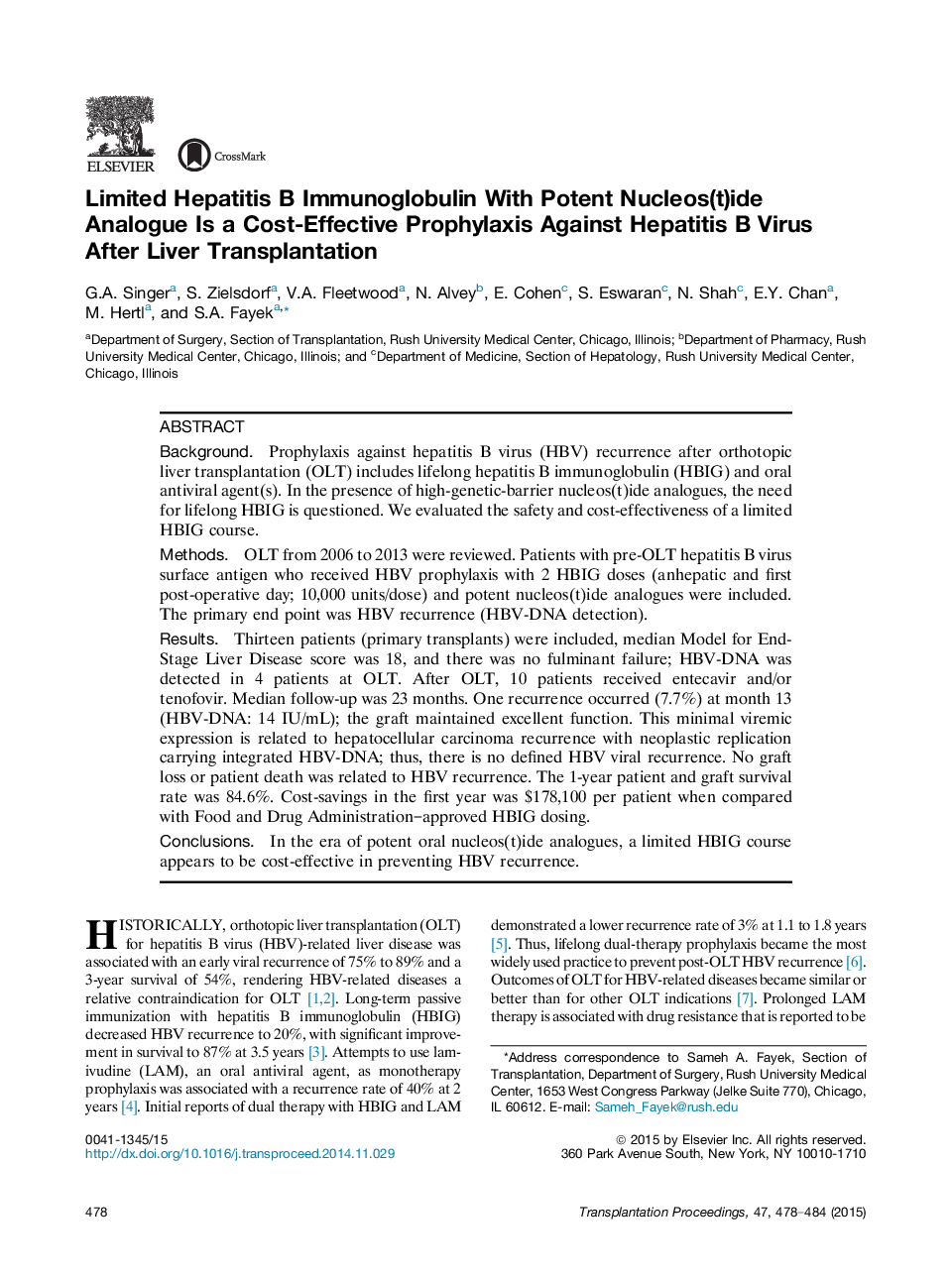| کد مقاله | کد نشریه | سال انتشار | مقاله انگلیسی | نسخه تمام متن |
|---|---|---|---|---|
| 4257631 | 1284547 | 2015 | 7 صفحه PDF | دانلود رایگان |

• We examined the effectiveness of a new protocol for post-OLT HBV prophylaxis.
• The use of only 2 HBIG doses is safe in the era of potent oral HBV agents.
• No patient death or graft loss was related to HBV recurrence.
• Significant cost reduction with the suggested protocol of limited HBIG dosing.
BackgroundProphylaxis against hepatitis B virus (HBV) recurrence after orthotopic liver transplantation (OLT) includes lifelong hepatitis B immunoglobulin (HBIG) and oral antiviral agent(s). In the presence of high-genetic-barrier nucleos(t)ide analogues, the need for lifelong HBIG is questioned. We evaluated the safety and cost-effectiveness of a limited HBIG course.MethodsOLT from 2006 to 2013 were reviewed. Patients with pre-OLT hepatitis B virus surface antigen who received HBV prophylaxis with 2 HBIG doses (anhepatic and first post-operative day; 10,000 units/dose) and potent nucleos(t)ide analogues were included. The primary end point was HBV recurrence (HBV-DNA detection).ResultsThirteen patients (primary transplants) were included, median Model for End-Stage Liver Disease score was 18, and there was no fulminant failure; HBV-DNA was detected in 4 patients at OLT. After OLT, 10 patients received entecavir and/or tenofovir. Median follow-up was 23 months. One recurrence occurred (7.7%) at month 13 (HBV-DNA: 14 IU/mL); the graft maintained excellent function. This minimal viremic expression is related to hepatocellular carcinoma recurrence with neoplastic replication carrying integrated HBV-DNA; thus, there is no defined HBV viral recurrence. No graft loss or patient death was related to HBV recurrence. The 1-year patient and graft survival rate was 84.6%. Cost-savings in the first year was $178,100 per patient when compared with Food and Drug Administration–approved HBIG dosing.ConclusionsIn the era of potent oral nucleos(t)ide analogues, a limited HBIG course appears to be cost-effective in preventing HBV recurrence.
Journal: Transplantation Proceedings - Volume 47, Issue 2, March 2015, Pages 478–484